You might be thinking that the height of your dog’s feeding bowl doesn’t really matter, but the truth is, it can make a significant difference in your pet’s overall comfort and well-being.
The right feeding height can impact your dog’s digestion, posture, and even reduce the risk of certain health issues.
So, how high should your dog’s bowl be? Well, it all depends on your furry friend’s size, and getting it just right can make a world of difference in their daily mealtime routine.
But before we delve into the specifics, let’s explore why finding the optimal feeding height is so crucial for your pet’s health and happiness.
Key Takeaways
- Elevated feeding bowls prevent neck strain and joint discomfort.
- Feeding bowl height should be determined by the size and measurements of the dog.
- Optimal feeding height is when the top of the bowl is level with the lower part of the dog’s chest.
- Elevated feeding bowls offer benefits such as improved comfort, reduced spills, and easier feeding for dogs with joint or digestive issues.
Importance of Optimal Feeding Heights
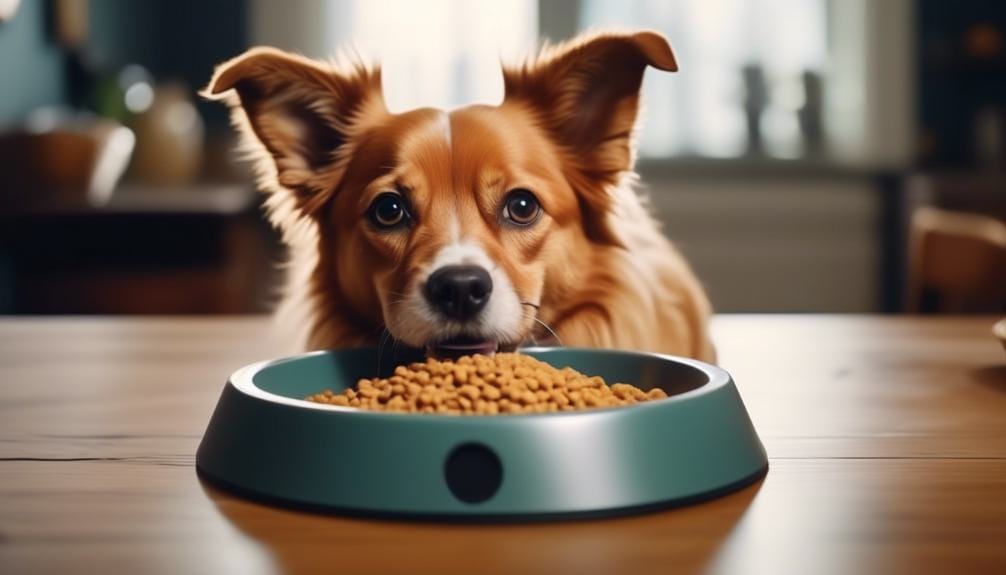
When considering the importance of optimal feeding heights for your dog, it’s crucial to understand the impact it has on their overall well-being and health. Raised feeding bowls can make a significant difference in your dog’s life.
By elevating the food and water to a height that’s comfortable for your dog, you can prevent neck strain and joint discomfort. This is particularly important for larger breeds or older dogs who may struggle with bending down to reach their bowls on the floor.
Additionally, an elevated feeding height reduces the risk of bloating, a serious condition that can be caused by rapid eating in a low feeding position. Ensuring a comfortable feeding position promotes healthy eating habits, encouraging your dog to eat at a more leisurely pace.
Factors Affecting Feeding Bowl Height
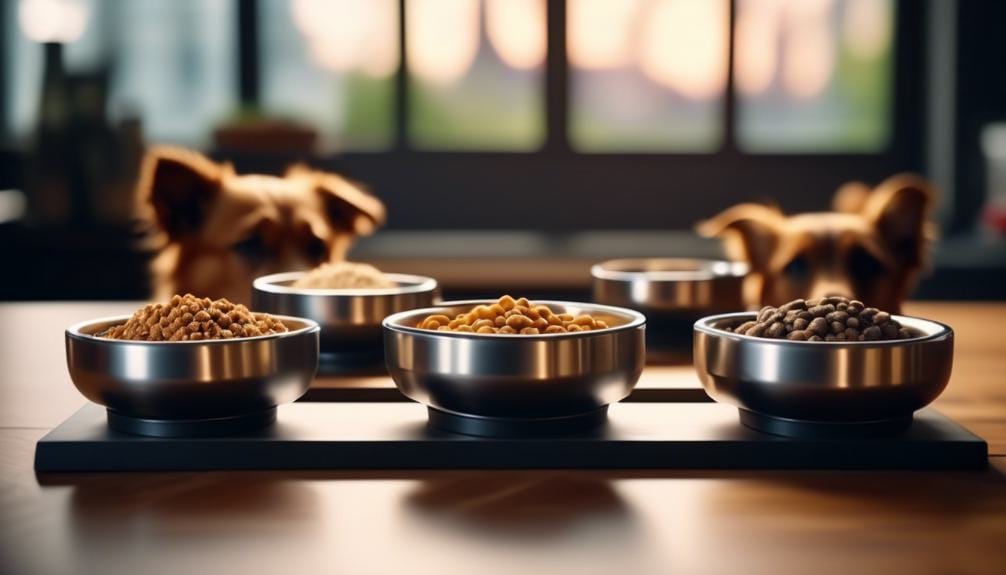
Determining the appropriate height for your dog’s feeding bowl is essential for their comfort and well-being. Several factors affect the correct height for a dog’s feeding bowl, especially for medium and large dogs. Here are three key considerations to keep in mind:
- Breed Size: Different dog breeds come in various sizes, and their feeding bowl height should be adjusted accordingly. Small-sized dog breeds such as Corgis, Dachshunds, Havanese, Maltese, and Pugs will require a lower feeding bowl height compared to medium and large dogs.
- Dog’s Measurements: To determine the correct height of the dog bowl, measure your dog from the floor to the top of their shoulders. The goal is to ensure that the dog can eat without lowering its neck or stretching upwards, promoting a comfortable and natural feeding position.
- Health Considerations: For medium and large dogs, raised dog bowls can offer several benefits, including preventing neck strain and joint discomfort, reducing the risk of bloating, and promoting healthy eating habits. However, it’s essential to consult a veterinarian, especially for large, barrel-chested dogs, if you have concerns about using raised dog food bowls.
Measuring Your Dog’s Ideal Bowl Height
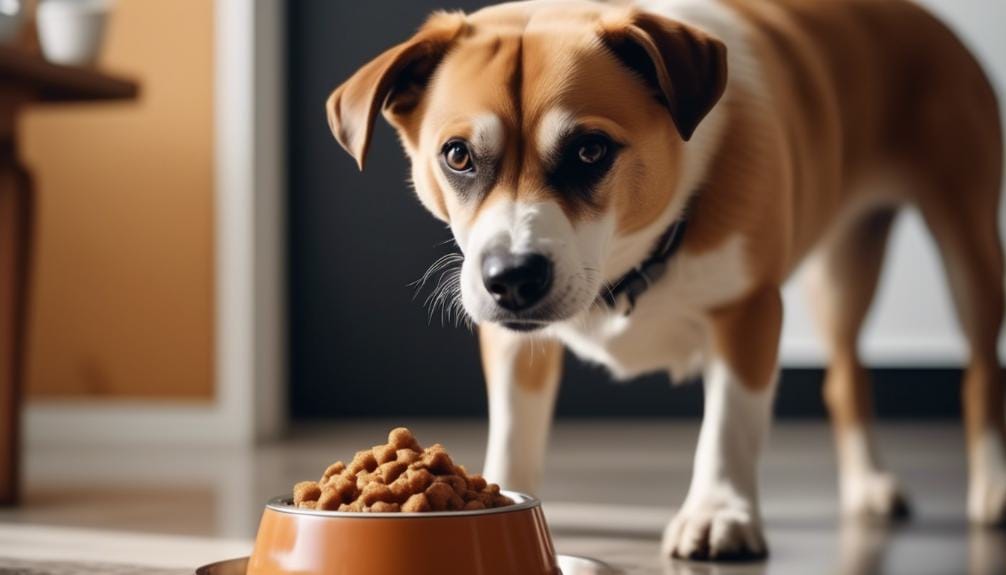
To determine your dog’s ideal bowl height, measure from the floor to the top of their shoulders, then subtract about 5 inches to ensure comfortable feeding. Use a measuring tape and make sure your dog is standing squarely on all fours.
This measurement will give you a good starting point for the height of your dog’s feeding bowl. The goal is for your dog to be able to eat without lowering its neck too much or having to stretch upwards. The top of the bowl should ideally be level with the lower part of your dog’s chest.
An elevated dog bowl can help achieve this ideal height, and adjustable raised dog bowls are also available to cater to your dog’s specific needs. Remember that the right bowl height can contribute to better digestion and overall comfort for your pet.
Benefits of Elevated Feeding Bowls
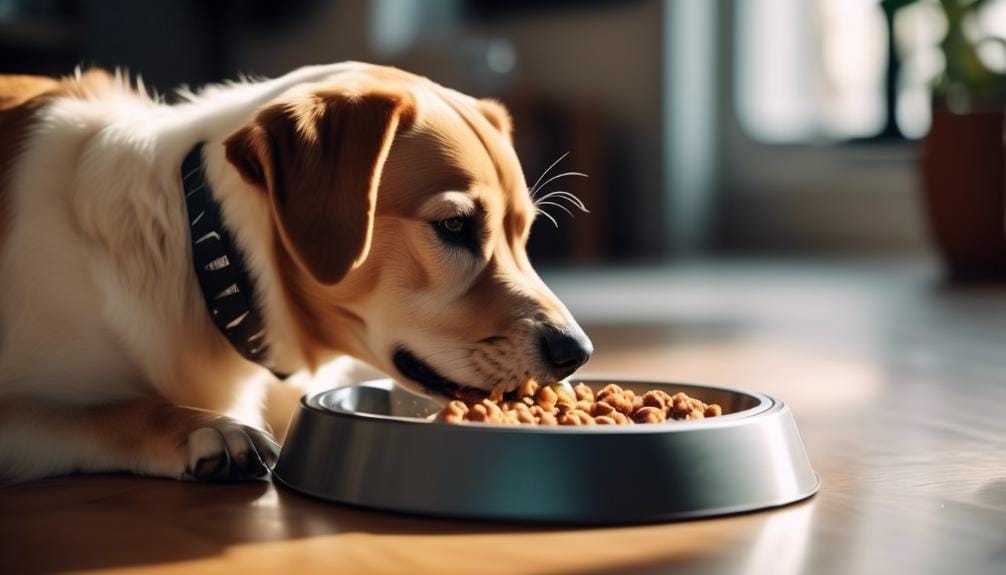
Elevated feeding bowls offer numerous benefits for your dog, providing a more comfortable and convenient dining experience. Here are three key advantages to consider:
- Improved Comfort: Raised bowls are especially beneficial for taller dog breeds, as they reduce the need for excessive bending while eating. This can alleviate strain on your dog’s neck, back, and joints, promoting better posture and digestion.
- Less Mess: With elevated bowls, there’s less chance of the bowl sliding around during meal times, leading to a tidier feeding area. This is particularly useful for dogs who tend to be enthusiastic eaters, preventing spills and splashes.
- Easier Feeding for Special Needs Dogs: Dogs with joint or digestive issues can benefit from elevated bowls. The height can make it easier for them to access their food, promoting better digestion and reducing discomfort during mealtimes.
Safety Considerations for Raised Bowls
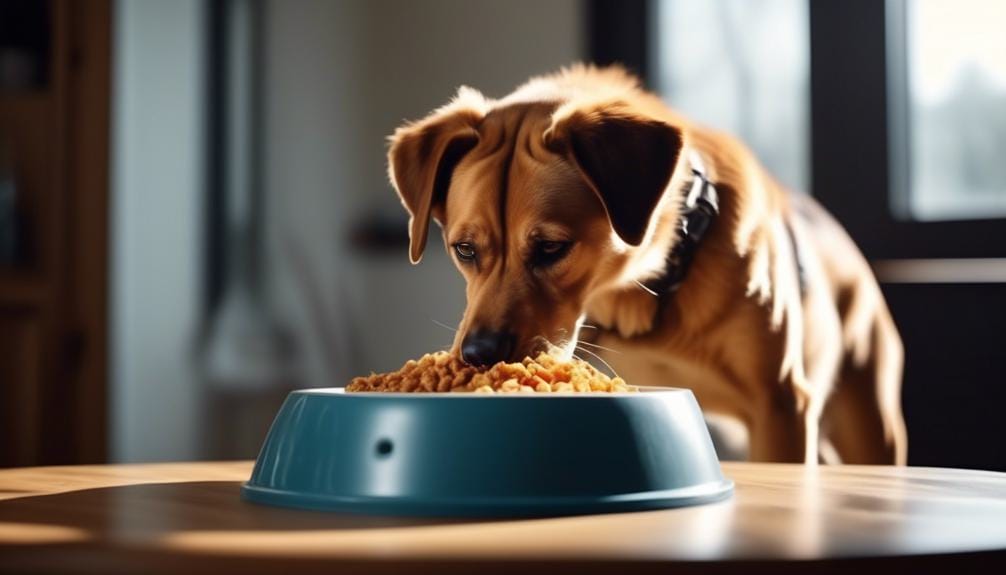
When choosing a raised feeding bowl for your dog, it’s essential to consider safety considerations to ensure their comfort and well-being during meal times.
Elevated bowls should be at a height that allows your dog to eat comfortably without straining their neck or stretching upwards. For small dogs, in particular, this is crucial as they’re more susceptible to neck strain and joint discomfort.
Additionally, it’s important to be mindful of the potential risk of bloating, especially for large, barrel-chested dogs. To mitigate this risk, consult a veterinarian, as raised bowls may or may not promote rapid eating and bloat in certain breeds.
It’s also advisable to ensure that the top of the bowl is level with the lower part of your dog’s chest to prevent any discomfort. Consider using adjustable raised dog bowls to achieve the perfect height for your dog’s comfort and health, taking into account their specific medical conditions or natural eating position.
Frequently Asked Questions
How Elevated Should My Dogs Bowls Be?
Your dog’s bowls should be elevated to the height that aligns with the lower part of their chest. This ensures comfortable feeding without neck strain. Remember to measure from the floor to their shoulders and subtract 5 inches for the perfect height.
What Is the Correct Height for a Dog Food Bowl?
To determine the correct height for your dog’s food bowl, measure from the floor to their shoulders and subtract about 5 inches. This helps prevent neck strain, joint discomfort, and bloating, promoting healthy eating habits.
Do Vets Recommend Elevated Dog Bowls?
Yes, vets may recommend elevated dog bowls for certain breeds or medical conditions. Consult with a vet to discuss potential benefits and risks. They can provide personalized advice based on your pet’s specific needs.
Should Dogs Eat Out of Elevated Bowls?
Eating from elevated dog bowls can benefit your pet by preventing neck strain, reducing bloat risk, and promoting healthy eating habits. Choose the correct height by measuring from the floor to your dog’s chest and subtracting 6 inches for large dogs or 3 inches for small dogs.
Conclusion
So, remember to measure your dog’s height to determine the optimal feeding bowl height. This will ensure that your furry friend can eat comfortably and without strain.
Elevated feeding bowls can provide numerous benefits for your pet’s health and well-being. Just be sure to consider safety factors when using raised bowls, and you’ll have a happy and healthy pup at mealtime!

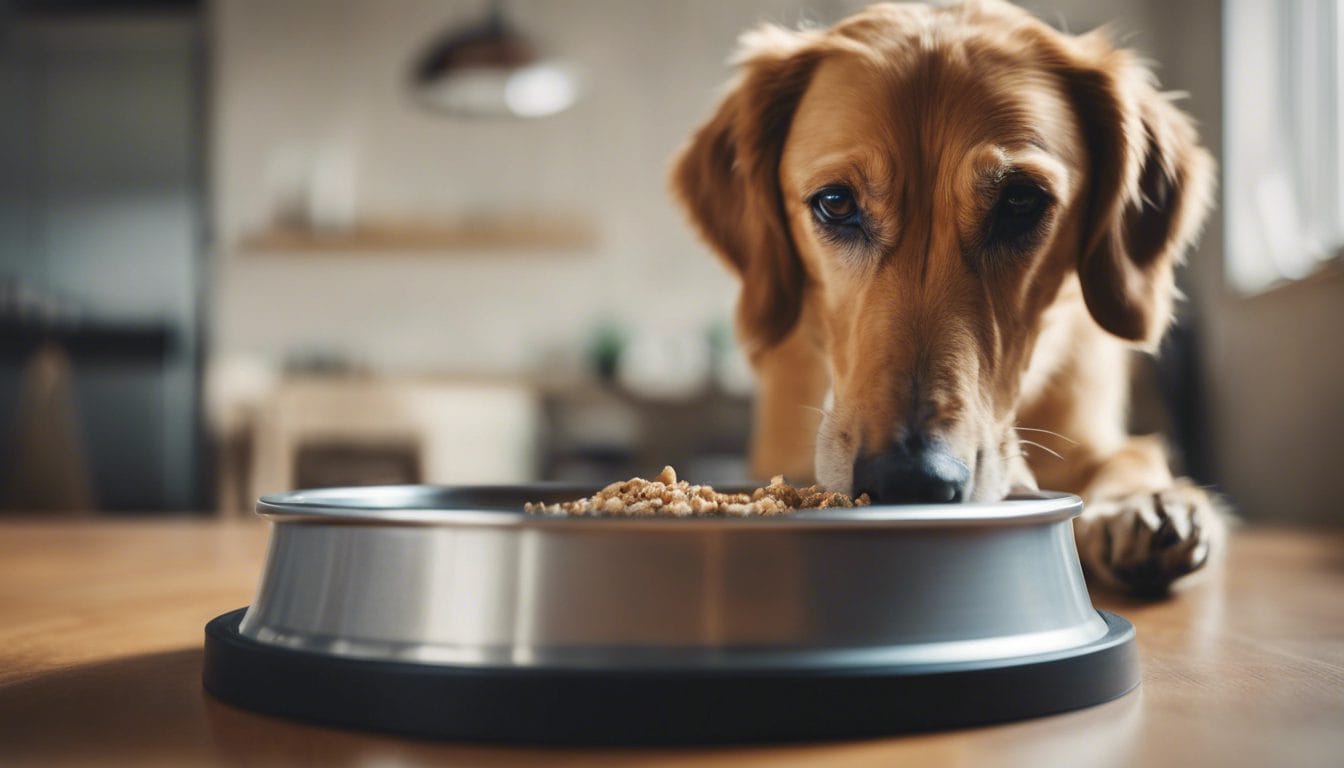
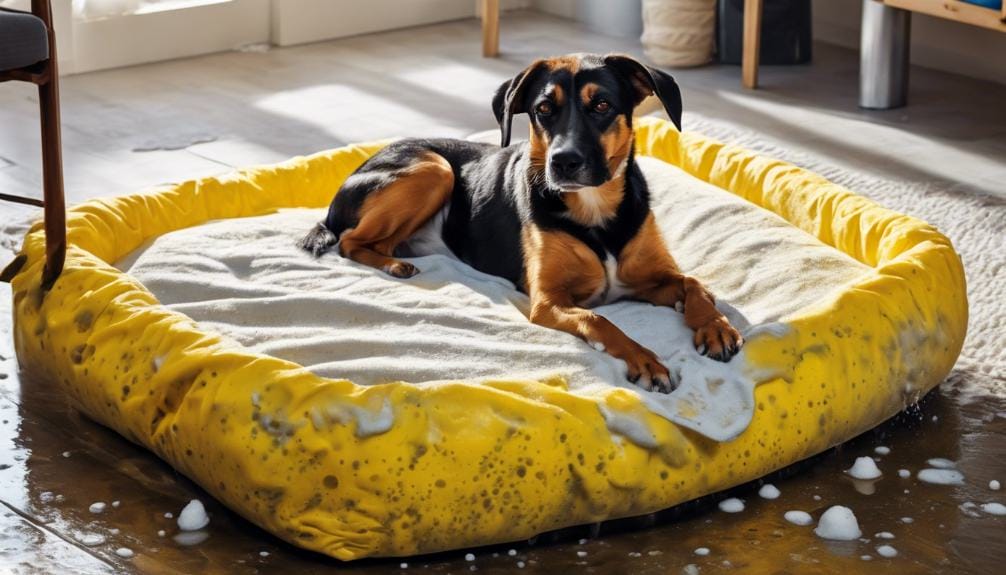

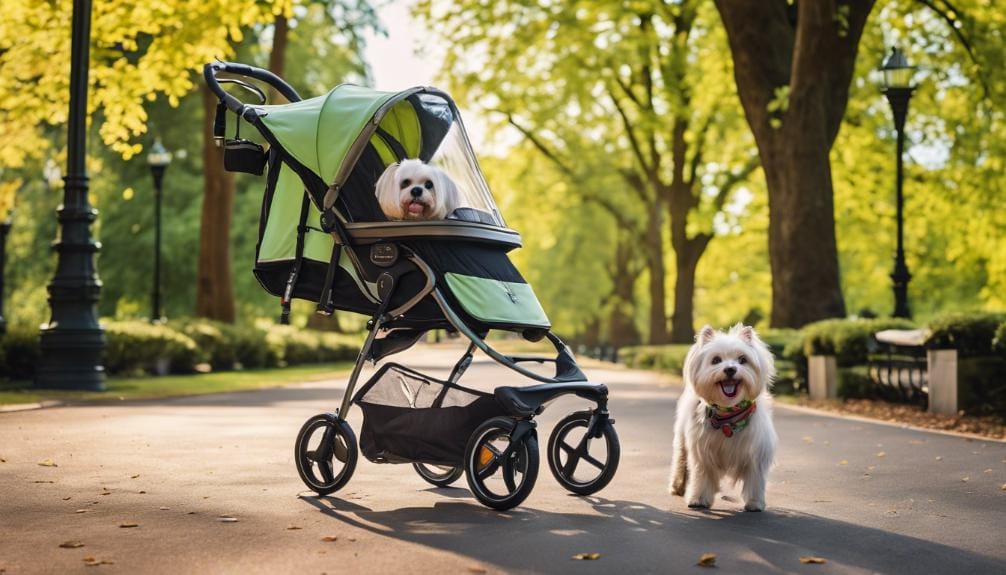
Leave a Reply
You must be logged in to post a comment.